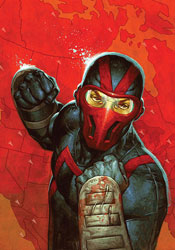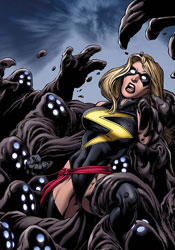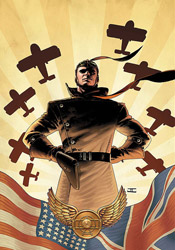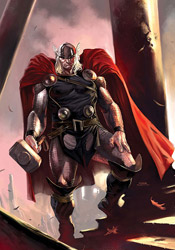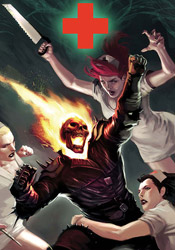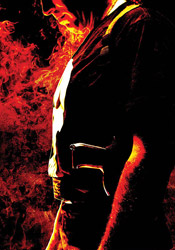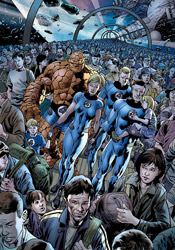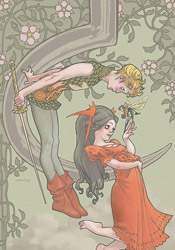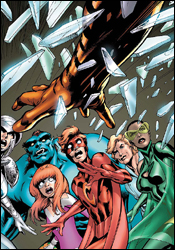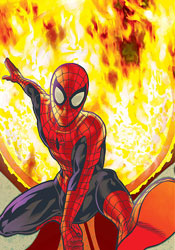
I don't know that I've ever read a David Lapham story I didn't like. Ranked among his more recent work, With Great Power isn't his finest hour, but it's at least an interesting angle on a character who's been largely the same for the last forty years. It's actually so original a take, though, that I had trouble just identifying Peter. Spidey's always been a bashful, nerdy kid at heart, but the way he acts when he's in-costume throughout this issue is totally out of line with that. He's a dog, rushing from lady to lady, excess to excess, which doesn't exactly cast him in the same kind of light he's enjoyed for his entire existence. I can understand the need to beef up on the character's immaturity – after all, he's just a kid enjoying the spotlight for the first time in his life, and the wilder his adventures at this point, the greater his regret after his uncle's eventual death – but he's basically unlikeable. Lapham is a genius when he's writing hard-edged action and drama, but he seems uncomfortable with a more wholesome, mainstream story like this one.
I'm also a big fan of Tony Harris's artwork, having followed his contributions to Ex Machina over at WildStorm since the series launched. He brings a certain authenticity to the table, granting his cast a realistic, approachable appearance that doesn't try to hide its flaws. Although he's been enhancing the political atmosphere of New York's City Hall with that style in Machina for a couple of years now, I can't imagine that climate differing too much from the one found in J. Jonah Jameson's war room, and that makes his transition between titles a natural one. Harris's style is equally at home in an editorial conference as it is in a mayoral debate, and he brings exactly the right blend of false authority and bravado to his rendition of Jameson and the rest of his staff.
But while his take on the Bugle staff, the scenery, the supporting cast and even the Fantastic Four are outstanding, his rendition of Spider-Man himself is a bit off. He doesn't feel right, doesn't match his surroundings. Harris's work is a fine blend of detail and simplicity – he conveys every important wrinkle in a lady's blouse, but never gives the rendition so much attention that it feels complicated. His Spider-Man takes that latter technique further than necessary, and comes across as empty and overly simplified. He doesn't look like he fits into his surroundings, and he's certainly not as exciting as he could be. Harris's work here is tremendous, but only when Spidey isn't a part of the picture.
Considering my opinion of the talent involved with this issue, I expected a lot more than I got. David Lapham's story is missing the touches of personality and detail that I'm used to, and it simply doesn't feel like a Spider-Man story. Tony Harris's work is largely on par with the rest of his efforts, doesn't show any signs of being rushed out despite working on two books this month, but he never gets a handle on the main character. At the end of this issue, I felt like I'd been promised something that was never delivered. It's a fine premise, but it never turns into what it could. Flip through this if you need to see what I mean… it's missing a few key elements.
Overall Score: 5.5
